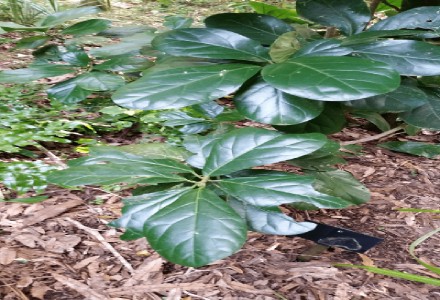
Penatia baylisiana Facts
- The somewhat hard to pronounce term of Pennantia baylisiana actually represents the scientific name for this incredible plant. Its common name, though, remains the equally unusual, but pronounceable, Three Kings kaikomako.
- Which name one chooses to use for it, however, makes absolutely no difference where one specific fact is concerned. Quite sadly, this remarkably distinctive flora further forms the single rarest known variety of tree on earth, at least in the wild.
- Given that its location appears to have never been inhabited, its existence remained unknown until its accidental discovery in 1945. Since that time, ongoing efforts to propagate it in greenhouses has met with some, if limited, success.
- In its native habitat, to date, only a single surviving specimen has been found. For that reason, the IUCN quite understandably presently lists this wonder of Nature as Critically Endangered. This sad status appears on the organization’s Red List.
- Evidence indicates that severe storms in modern times destroyed the rest of its mature population. Roving herds of wild goats sharing the habitat of the Pennantia baylisiana appear to have subsequently consumed all the seedlings existing at that time.
- Since only the single individual tree exists in the wild, potential habitat loss obviously poses a severe threat to its existence. Now, however, it must also face the same danger other species share, that of the effects of ongoing climate change.
Related Articles
Carolina Silverbell Quiver Tree Southern Magnolia
Pennantia baylisiana Physical Description
Although it stands out from other trees due to its terrible situation, physically, it appears much like many related species. Most unfortunately, it currently remains undetermined if the single survivor in the wild represents an average example of the species.
For what it’s worth, this specific plant, which appears to be fully mature, displays a height measuring roughly 26 ft (8 m). It also possesses a comparatively moderate-sized crown, since this has a width that measures approximately 13 ft (4 m) across.
The tree also manages to impress in ways other than sheer height. For one, the wonder of evolution produces multiple trunks, each of which remains relatively thin. The bark of these trunks further has a unique quality, displaying an unusual grayish shade in color.
Its leaves also develop as dark green in color, and appear in large numbers. The flowers of the Pennantia baylisiana, meanwhile, possess their own distinctiveness. These remain small, appear in large clusters, and present either a bright green or white coloring.
Its fruit further distinguishes it from many related types of trees, at least in terms of appearance. This forms elongated in shape, and averages about 0.4 in (1 cm) in length. Each of these also has a bright purple coloring, and produces a single, quite tiny seed.
- Kingdom: Plantae
- Phylum: Tracheophyta
- Class: Magnoliopsida
- Order: Apiales
- Family: Pennantiaceae
- Genus: Pennantia
- Species: P. baylisiana
Image Credit: K. Ziarnek, Kenraiz
CC License: https://bit.ly/1xMszCg
Pennantia baylisiana Distribution, Habitat, and Ecology
Obviously, the terribly rare Pennantia baylisiana has an unbelievably limited zone of habitation, since only one plant remains in the wild. This area happens to consist of the location known as Great Island, part of what man now calls the Three Kings Group.
This formation itself currently constitutes part of the country of New Zealand, near the continent of Australia. Each of these 13 uninhabited islands remains quite tiny, providing it with extremely limited options for spreading, even under optimal conditions.
Even though the surviving individual of the species is female, its location makes natural propagation virtually impossible. Amazingly, it resides on a rugged scree slope, sitting on the north face of the primarily rocky island, which only measures 1.5 sq mi (4 sq km).
Research, which remains ongoing, seems to indicate that the true natural habitat of the species consisted of a decidedly different environment. It’s believed by researchers that the species in general inhabited the thin coastal forest present of the tiny island.
Practical efforts to protect the remaining specimen exist, quite thankfully. In various locations, mainly in New Zealand, work also continues, albeit slowly, on increasing its numbers. This occurs primarily via cuttings, since viable fruit remains rare.
Species Sharing Its Range
Check out our other articles on 7 Geological Marvels of Asia, Victoria Crowned Pigeon, Tierra del Fuego, Harbor Porpoise, European Mantis, Purple Frog, Plumed Basilisk

